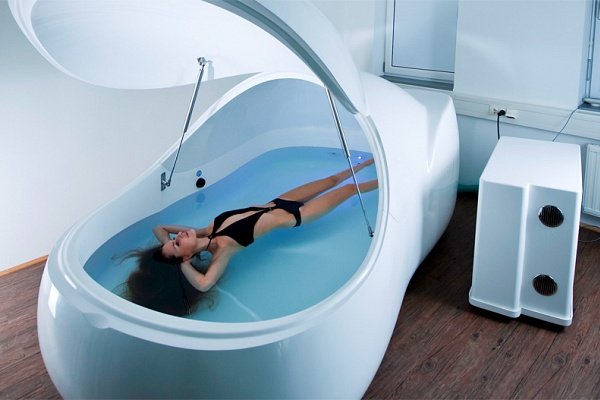14 January 2023, by i-sopod
How Float Tanks Can Improve Heart Rate Variability
Float tanks, otherwise known as sensory deprivation tanks, are gaining a lot of attention these days due to their ability to reduce stress and improve well-being. 1 But did you know that float tank therapy can also improve your heart rate variability (HRV)? HRV is an important indicator of physical and mental health, and a recent study has shown for the first time that float tank use can increase HRV. Now let’s investigate the specifics of HRV, why it’s important, and how float tanks can help.
What Is Heart Rate Variability?
Heart rate variability (HRV) is the variation in time between each heartbeat. It measures how efficiently your heart can respond to changes in your environment, such as stress or physical activity. Your HRV also reflects how well you can regulate your body’s balance between the sympathetic (fight/flight) and parasympathetic (rest/digest) systems.2
The autonomic nervous system (ANS) regulates the body’s response to environmental changes and internal needs. For example, the sympathetic nervous system is activated when the body senses danger, resulting in increased heart rate and blood pressure, shallow breathing, and tense muscles as the body prepares to fight or flee.3
On the other hand, when the body is in a safe environment, the parasympathetic nervous system is activated, which leads to decreased heart rate and blood pressure, deeper breathing, and muscle relaxation. Therefore, maintaining a balance between these two systems is essential to achieve lasting health and wellness.
The Recent Study on Float Tanks and HRV
A recent study published in Frontiers in Neuroscience looked at how using a floatation tank affects heart rate variability. This is the first study investigating the cardiovascular and respiratory-related effects during floatation-REST. The research revealed that supine floating significantly lowers diastolic and systolic blood pressure and breathing rate.4
In addition, the study found that participants had significantly increased their heart rate variability after 90 minutes of floating in a floatation tank compared to before they entered the tank. This increase in HRV was indicative of an activation of the relaxation response—in other words, those who used the float tank could relax more deeply than before they entered the tank.
How Does Floating Improve Heart Rate Variability?
Float tanks provide an environment free from distractions and external stimuli such as sound or light; this allows users to focus on nothing but themselves while they relax deeply inside the tank, which leads to lower stress levels and improved relaxation responses.5
Stress reduction can improve cardiovascular functioning, leading to higher heart rate variability overall.6 In addition, floating increases endorphin levels which also helps regulate heart rate variability by improving blood flow throughout the body.
Your title here…Final Thoughts About Floatation Tanks and HRV
Floatation tanks have been proven effective in reducing stress levels and promoting relaxation responses—and now we know they can also improve heart rate variability (HRV). Increased HRV has been linked with better physical and mental health outcomes and enhanced psychological well-being and quality of life. So, if you want to give yourself a boost when it comes to your health, try out a floatation tank session. You may find yourself feeling more relaxed than ever before!
Experience the ultimate in relaxation and rejuvenation with an i-sopod float tank.






